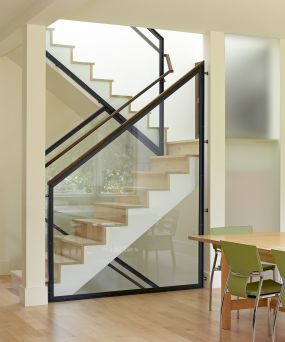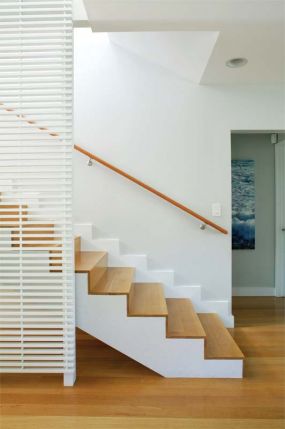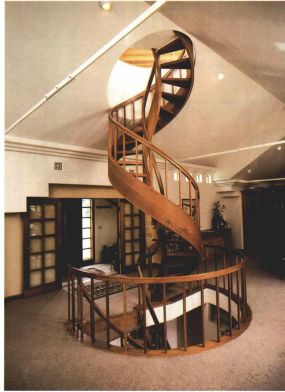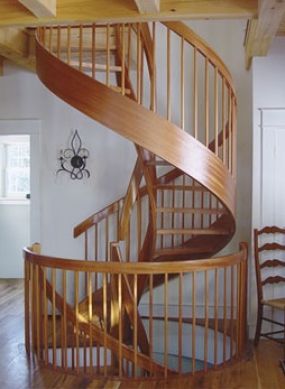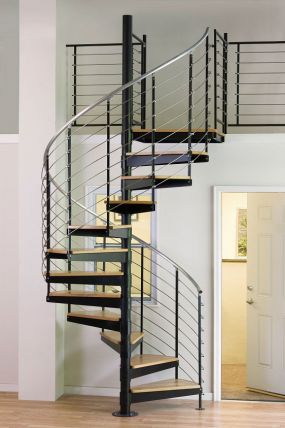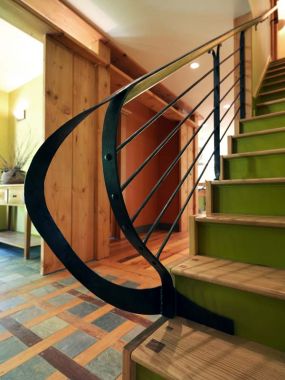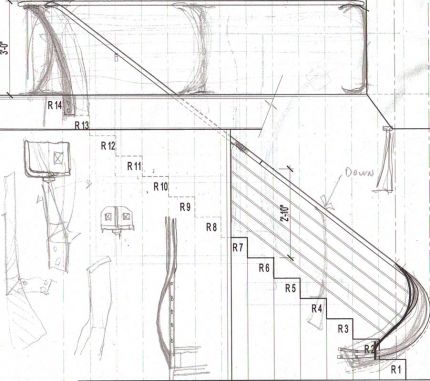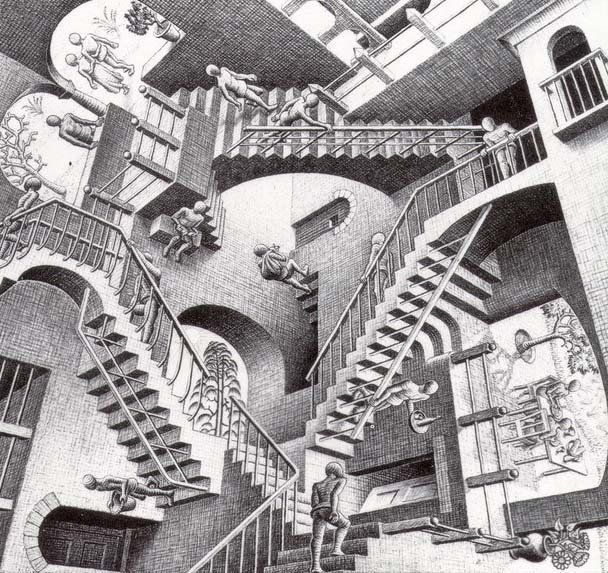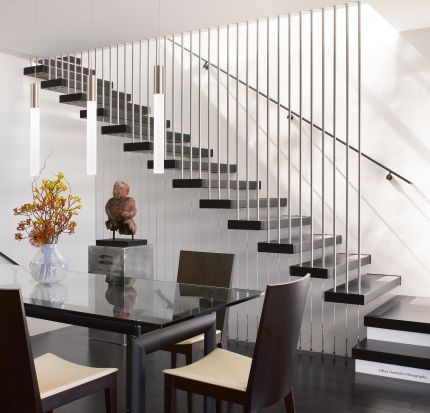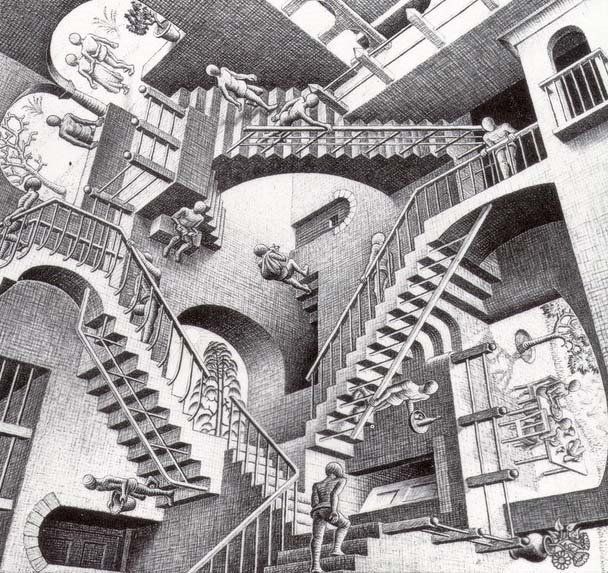
In dreams, it seems, anything is possible. In dreams all projects come in under budget, and there really is such a thing as a board stretcher. And in dreams you can build anything.
Take the stairs portrayed in the 2010 motion picture “Inception.” If you’re one of those people who see the architecture in everything, you probably remember the scene where Joseph Gordon-Levitt expounds on what he calls “paradoxical architecture” while leading a mesmerized Ellen Page up a very convincing model of the enigmatic Penrose Stair. “In dreams,” he tells her, “you can cheat architecture into impossible shapes.”
Alternatively known as the Impossible Stairway or Escherian Stairwell (the Dutch graphic artist M.C. Escher employed a similar technique in his lithograph “Ascending and Descending”) this optical illusion of a staircase that never ends is actually credited to a British psychiatrist/mathematician, Lionel Penrose, and his mathematician son, Roger.
For those of us who are more focused on moving between two floors than ascending levels of consciousness, the next question is this: Can the Penrose Stairs actually be built? It really did seem so for a brief period in 2013, when two students at Rochester Institute of Technology produced a documentary about a real-life example of this amazing stair constructed on campus in the 1960s by the Filipino architect Rafael Nelson Aboganda. When I add that the two were film students, you can pretty much figure out how that story ends.
Could CAD help? Rendering architecture by computer may let you slide on your drawing skills (we can’t all be Escher) but it also lets you know pretty fast that you can’t cheat in 3-D. A Sketchup model of the Penrose Steps would have you believing that the impossible stair is possible, that is, until you swing the view around and the illusion is dashed.
Face it: In the real world, we have three dimensions and we have building codes. And while there are plenty of talented builders for whom the never-ending staircase is a reality, we’ve yet to find a staircase that defies those laws of nature. That doesn’t mean, however, that a staircase can’t be a thing of beauty and grace, as architects and builders prove to us every day.
Here are a few staircases we’ve published recently that do just that.
These stairs designed by architect Joel Karr and built by Blair Burke appear to float out of the dining room, an illusion created by the rods that suspend them and the skylight positioned above.
We see time and again how positioning a light source at the top of a stairwell enables that light to filter throughout a structure, even to different levels. In this San Francisco rowhouse remodel, architect Ross Levy topped the stairwell with an operable skylight that introduces natural light to both the third and main floors. Glass railings allow every bit of light to shine through.
With a creative skirtboard and Rulon panels standing in for a wall, this stair is one of many standout features in a remodel by Krista Becker, an architect with Moore Ruble Yudell in Santa Monica. These steps have a rise of 7 in. and a run of 11 in., resulting in a deeper but more comfortable ascent.
Spiral staircases always fascinate. If you’re talented (and dedicated) enough, you can actually build the double-helix spiral staircase on the left. Not quite up to the job? You can call in York Spiral Stair to build one for you (center photo) or, if a metal spiral is what you need, order a kit online from the The Iron Shop and assemble it yourself.
One of the most memorable stairs I’ve had the pleasure to write about was this one designed by architect Gregor Masefield and executed by Sean Flynn of Silver Maple Construction of Bristol, VT. with an assist from blacksmith James Fecteau. It was part of a remodel that demonstrated how a vision can elevate architecture. Maybe not in quite the same way as the “Inception” stairs, but in a way dreamers can still appreciate.
Fine Homebuilding Recommended Products
Fine Homebuilding receives a commission for items purchased through links on this site, including Amazon Associates and other affiliate advertising programs.

Get Your House Right: Architectural Elements to Use & Avoid

All New Kitchen Ideas that Work

A Field Guide to American Houses

